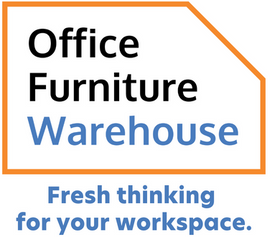Which is better? Open plan or partitions?
The design of your office has a significant impact on employee productivity, collaboration, and overall job satisfaction. It should also reflect the company culture and the personality of your business. Combined, these factors make the design and layout of your office integral to commercial success. There are two basic types of offices; open-plan and closed offices. With each offering its own pros and cons, we’ve put together a guide on the advantages and disadvantages of both.
Open Plan Offices
Open-plan offices are becoming increasingly popular as businesses strive to create a more collaborative and interactive work environment. In an open-plan office, there are no walls or partitions between employees, and everyone works in a shared space. This design can have a number of benefits:
Advantages of Open Plan Offices:
- Increased collaboration: Open-plan offices can foster collaboration and teamwork as employees work in close proximity and can easily communicate and share ideas.
- Improved communication: They can also enhance communication between team members, as employees are more likely to interact with each other and discuss work-related matters.
- More natural light: With fewer walls, open-plan offices often have more natural light, which can boost mood and productivity.
Disadvantages of Open Plan Offices:
- Distractions: Open-plan offices can be noisier and come with more distractions, making it difficult for employees to concentrate on their work. Overcome this with our office partitions.
- Lack of privacy: There is less privacy, which can be uncomfortable for employees who need to have private conversations or work on confidential projects.
- Reduced productivity: In some cases, open-plan offices can reduce productivity, as employees may be distracted by the noise and activity around them.
Alternatively, closed office spaces have been the traditional office design for many years. A closed office has walls or partitions separating employees, providing privacy and reducing distractions.
Advantages of Closed Office Spaces:
- Privacy: Closed offices offer employees privacy, which can be important for tasks that require concentration, or private conversations.
- Reduced distractions: Closed offices can also reduce distractions from other colleagues or activities in the office, leading to better productivity.
- Security: Closed offices offer more security for confidential information, making them more suitable for some industries.
Disadvantages of Closed Office Spaces:
- Isolation: Closed offices can lead to employees feeling isolated or disconnected from their colleagues, which can impact morale
- Limited collaboration: With walls or partitions separating employees, collaboration can be more difficult, leading to less communication and idea-sharing.
- Lack of natural light: Closed offices often have less natural light, which can negatively impact mood and productivity.
Which suits you depends entirely on your business. Do you require collaboration and communication or privacy and fewer distractions? Get in touch with Office Furniture Warehouse to discuss your options and get some fresh thinking for your workspace.


